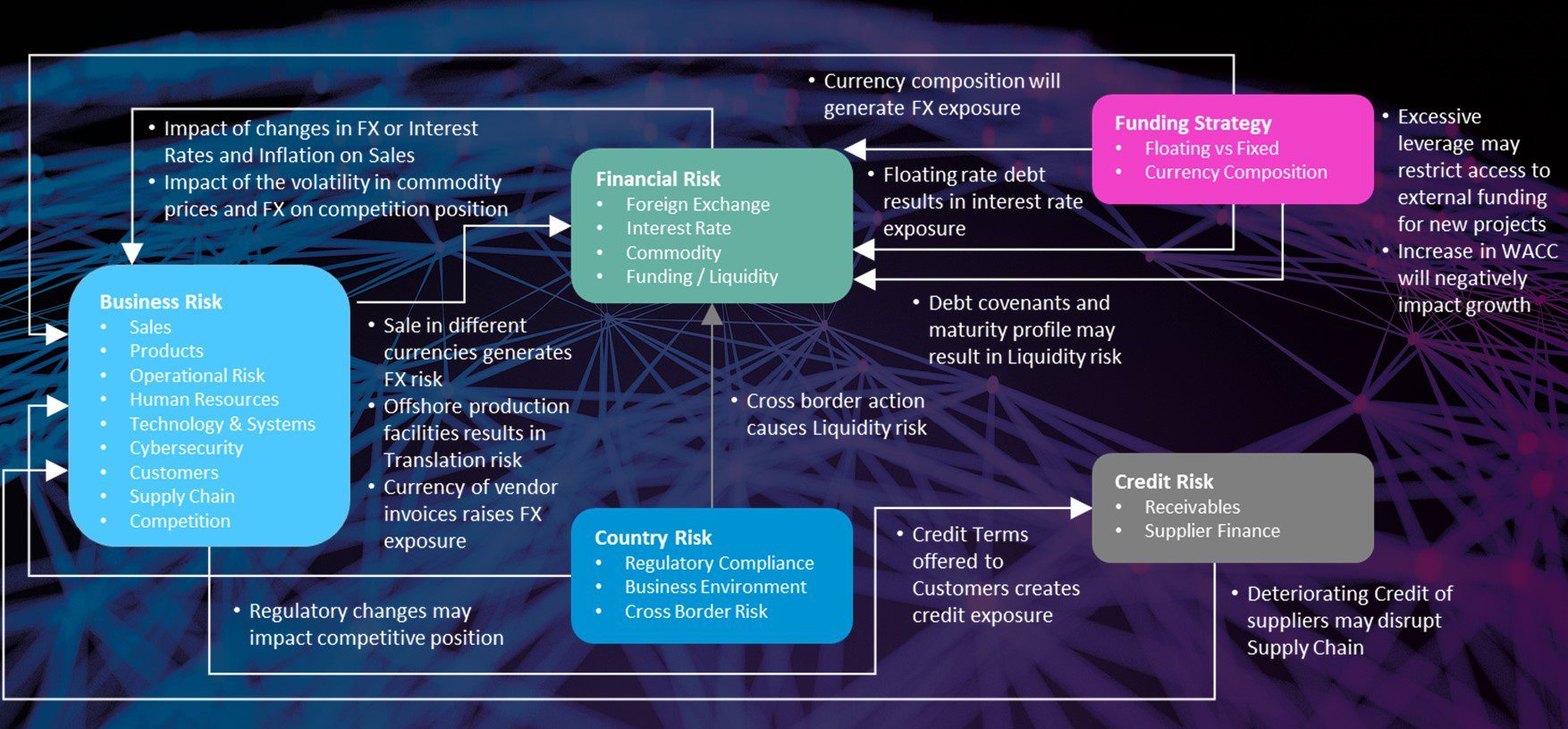Integrated Risk Management
In today’s increasingly complex business landscape, maximizing firm value requires a strategic, integrated approach to risk management. Corporate managers must go beyond siloed assessments of financial risks to develop a holistic framework that identifies and mitigates all value-diminishing exposures.
In our experience of working with diverse clients across industries, the transmission mechanism from risk factors to firm value is rarely linear, as risks can impact cash flows directly, as well as indirectly, by affecting underlying operations, or even other risk factors. Integrated risk management provides a systematic way of thinking about risk and its multidimensional effects on the firms, coupled with a framework for deciding upon the best strategy for implementation.
We support our clients in developing and implementing this framework by adopting the following approach:
- Risk Mapping: Identification of all material “natural” risk exposures, i.e; those financial and non-financial risks to which the firm’s primary businesses naturally expose the company. Understanding how different risk factors are interrelated and interact with the business is the first step to design an Integrated Risk Management Framework.
- Measurement or Quantification: Measure and quantify the impact of each risk factor on the value of the firm.
- Risk Retention: Assess and decide on which risks to retain and hedge.
- Risk Response: Define risk tolerances and plan and implement responses, including the design of treasury policies.
- Risk Aggregation: Evaluate risks cumulatively so that any connection between the risks, if they exist, can be assessed effectively. For example, the response to a risk may have to be adjusted if it is negatively correlated to another risk faced by the organisation.
- Risk Reporting: ensure risks are reported to management and Treasury.
- Oversight, Audit and Tuning: Re-alignment of Risk Management as a continuous process i.e.; regularly ensuring that the process accomplishes what it is supposed to and ensuring that the objectives of the process remain consistent with the defined objectives.
Integrated Risk Management Framework
Interdependence and causality of risk factors
Understanding how different risk factors are interrelated and interact with the business is the first step to design an Integrated Risk Management Framework. This process is known as Risk Mapping.





